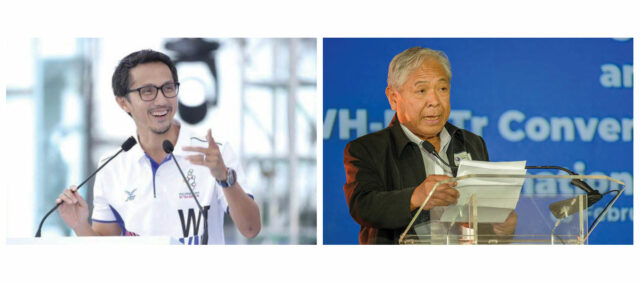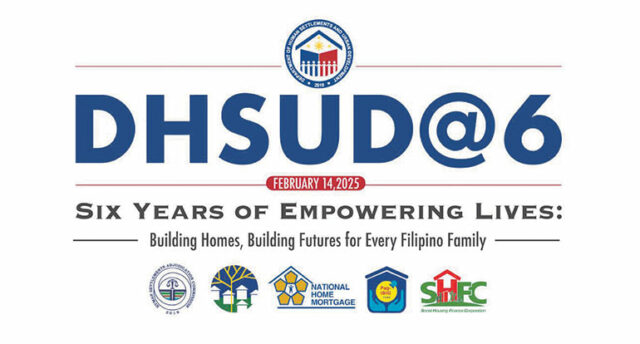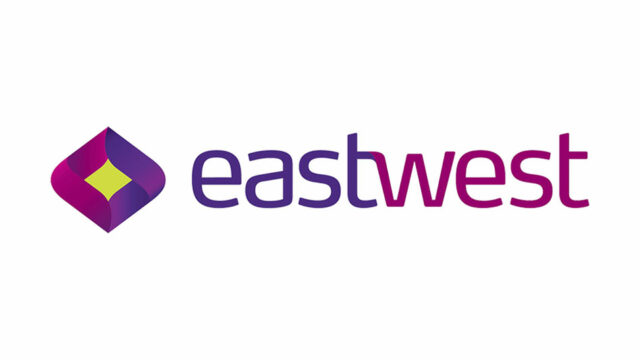BSP surprises by keeping rates steady

By Luisa Maria Jacinta C. Jocson, Reporter
THE BANGKO SENTRAL ng Pilipinas (BSP) unexpectedly held interest rates steady on Thursday as global uncertainties threaten the outlook for inflation and growth, although signaled that the easing cycle is still underway.
At its first policy meeting of the year, the Monetary Board left the target reverse repurchase rate unchanged at 5.75%.
Rates on the overnight deposit and lending facilities were also kept at 5.25% and 6.25%, respectively.
The central bank had cut rates by 25 basis points (bps) at each of its last three meetings since August 2024.
“On balance, uncertainty about the outlook for inflation and growth warrant keeping monetary policy settings steady,” BSP Governor Eli M. Remolona, Jr. said.
“Before deciding on the timing and magnitude of further reductions in the policy interest rate, the Monetary Board deems it prudent to await further assessments of the impact of global policy uncertainty and the potential effects of the actual policies.”
The BSP’s decision came as a surprise after 19 out of 20 analysts polled by BusinessWorld had anticipated a 25-bp cut at Thursday’s meeting. Only one analyst expected the BSP to keep rates steady.
“Normally, we would have cut further, but something has changed. The thing that has changed is the uncertainty over what’s going on globally, especially the uncertainty over trade policy,” Mr. Remolona said.
US President Donald J. Trump’s plan to impose reciprocal tariffs on every country that charges duties on US imports has raised fears of a wider global trade war.
Since taking office in January, Mr. Trump has slapped tariffs on Chinese imports and a 25% tariff on steel and aluminum imports, while putting on hold duties on imports from Mexico and Canada.
“But there are other sources of uncertainty, and we are not quite comfortable with evaluating the impact of that, the uncertainty itself. We don’t quite know what the policies will be,” Mr. Remolona added.
The BSP chief said they are looking at recalibrating their models to better account for these uncertainties.
“We are facing an unusual phenomenon in terms of the uncertainty of policies that will be put in place and our models don’t capture those things very well,” he said.
‘STILL IN EASING CYCLE’
Meanwhile, Mr. Remolona said that despite the policy pause, the central bank is “still in the easing cycle” and is not considering raising borrowing costs.
“Looking ahead, the BSP anticipates continuing its measured shift to less restrictive monetary policy settings, even as previous policy adjustments further work their way through the economy,” he said.
“For now, the issue is when do we actually ease in terms of moving the policy rate down. I think we have five more meetings this year, so in some of those meetings we will probably be easing (but) not all of those meetings.”
The central bank will likely continue reducing interest rates by 25 bps at a time, he said.
“It doesn’t mean 25 bps each time, each policy meeting. It just means when we do cut, it will just be 25 bps. At least we hope so, I hope we don’t need to cut by more than that.”
Mr. Remolona earlier said they could cut by up to 50 bps this year. Asked about this outlook again, he said: “That’s what it looks like.”
The BSP will also continue to consider keeping rates steady, depending on the data, Mr. Remolona said, but added that a rate cut is still “on the table” for the next Monetary Board meeting on April 3.
INFLATION OUTLOOK
The central bank said the risks to the inflation outlook have become “broadly balanced” for this year and the next.
The central bank raised its risk-adjusted forecast for this year to 3.5% from 3.4% previously. However, it kept its projection for 2026 at 3.7%.
The BSP’s baseline forecasts are also close to its risk-adjusted projections.
“As we said, because the risks are now more broadly balanced, they’re not much different from the risk-adjusted forecasts,” BSP Deputy Governor Francisco G. Dakila, Jr. said.
Mr. Dakila said there could be a lag in the impact of the minimum wage adjustments implemented last year.
“It can be noted that taking an average of the adjustments in nominal minimum wages in 2024 across the regional wage boards would amount to about 8.1% on the average, so that has an impact on inflation for this year, in particular towards the latter half of 2025,” he said.
Positive base effects from easing commodity price pressures in 2024 could also exert some impact in the second half of this year, he added.
“Because of those two factors, there can be some moderate uptick of inflation in the second half of 2025, but we are seeing that inflation will go back to the midpoint of the target band in 2026, and that comes on the back of a decline in oil prices as the market remains in backwardation,” Mr. Dakila said.
“On the risks… there can be some upside pressures coming from utilities, but that is counterbalanced by the moderation of inflation in rice,” he added.
Meanwhile, Mr. Remolona said domestic growth prospects “continue to be firm.”
“However, uncertainty over global economic policies and their impact on the domestic economy has increased significantly,” he added.
Economic managers are targeting 6-8% gross domestic product (GDP) growth this year.
While inflation concerns have a “bigger weight” in the BSP’s policy making, Mr. Remolona said they still take account of economic growth.
“We don’t want to lose output unnecessarily. If we can manage, we want to reduce inflation without reducing output. That’s a balancing act. This time, the balancing act is more difficult than usual.”
‘SHORT-LIVED’ PAUSE?
Meanwhile, analysts expect the central bank to resume its rate-cutting cycle soon.
“We think this represents a pause, rather than a halt to the easing cycle,” Capital Economics Senior Asia Economist Gareth Leather said.
“We reckon that (Thursday’s) rate hold, following three consecutive cuts, will prove to be short-lived,” Pantheon Macroeconomics Chief Emerging Asia Economist Miguel Chanco said.
Mr. Chanco said sluggish GDP growth and within-target inflation provides “ample policy space for rate reductions without losing the credibility of its ‘less restrictive’ posture.”
“Provided inflation remains under control, then further cuts are likely over the coming months,” Mr. Leather added.
Both Capital Economics and Pantheon expect the BSP to deliver up to 100 bps worth of rate cuts this year.
“With inflation as moderate as it is, the real policy rate in the country is still some 250 bps over its historical average. All told, we’re sticking to our baseline view and expect to see 100 bps in additional cuts before yearend,” Mr. Chanco added.
The Philippines is also unlikely to be significantly impacted by Mr. Trump’s proposed tariffs.
“While we think US trade policy will remain uncertain for some time, the central bank clearly needs some time before it decides on its response. Our assumption is that the Philippines will be hit by a 10% universal tariff, but that the impact will be relatively small (on the currency, inflation and growth),” Mr. Leather said.
RRR CUTS ‘FAIRLY SOON’
Meanwhile, Mr. Remolona said that reserve requirement ratio (RRR) cuts are still in the pipeline for this year.
“What I can say is we will likely reduce it from 7% to 5%. The timing is still under discussion, but I think it will be fairly soon. Maybe sooner than the middle of the year,” he said.
The BSP reduced the RRR for universal and commercial banks and nonbank financial institutions with quasi-banking functions by 250 bps to 7% from 9.5%, which took effect last October.
Meanwhile, the central bank is also seeking to develop a “playbook” to guide foreign exchange intervention.
“We’re developing a playbook for intervention in the foreign exchange market. We have been intervening based on our judgment and our experience, but we haven’t codified this experience,” Mr. Remolona said.
This would not result in further regulation, he said, but will be based on “better economic analysis and better market intelligence.”
“We’re worried about the pass-through to exchange rate because, you know, global trade is often invoiced in dollars…even when the story behind the depreciation is really a stronger dollar,” he said.
“But when the peso seems to depreciate against the dollar, then at some point it causes inflation. We worry about that. By the way, for most of the year, it hasn’t been a peso depreciation. It’s been more of a strong dollar that’s been moving the exchange rate,” he added.





 “Globe Business is dedicated to supporting businesses in navigating their digital transformation journey. We help them plot their roadmap to achieve greater digital proficiency and a stronger digital stance. We offer guidance and expertise through our business solution consultants,” KD Dizon, Vice-President and Head of Globe Business, said in a special edition of the BusinessWorld Insights forum.
“Globe Business is dedicated to supporting businesses in navigating their digital transformation journey. We help them plot their roadmap to achieve greater digital proficiency and a stronger digital stance. We offer guidance and expertise through our business solution consultants,” KD Dizon, Vice-President and Head of Globe Business, said in a special edition of the BusinessWorld Insights forum. Globe Business
Globe Business 

















